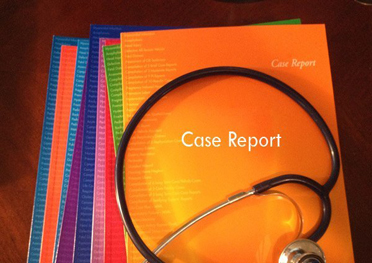Background: Diet plays a key role in the pathogenesis of kidney stones. In particular, recent findings have advanced knowledge on the protective role of a high calcium diet. However, not much is known about the specific role played by milk intake in the pathogenesis of kidney stones compared with other dairy products, especially cheese.
Membranoproliferative Glomerulonephritis Preceding Non-Hodgkin Lymphoma Recurrence: A Case Report
Introduction: Membranoproliferative glomerulonephritis has been reported to occur in association with non-Hodgkin�s lymphoma but there is few information about glomerulonephritis response to the treatment of non-Hodgkin�s lymphoma.
Does Acute Kidney Injury Alter Energy Metabolism of Septic Patients?
Background: The determination of resting energy expenditure (REE) in critically ill patients is essential to prevent hypo and hyper alimentation.
Nephrolithiasis Associated with Normocalcemic or Hypercalcemic Primary Hyperparathyroidism: An Update on Medical Management
Primary hyperparathyroidism (PHPT) is a disease involving a broad range of alterations of calcium homeostasis, sustained by parathyroid hormone (PTH) levels that are clearly abnormal. The anomalies directly associated with hyperparathyroidism are nephrolithiasis and fibrocystic bone disease.
Intractable Hematuria Due to Advanced Cardiac Failure and Venous Stasis
A case of intractable gross hematuria in a patient with severe cardiac failure is presented. Diagnostic studies revealed venous stasis in bladder as the cause of this extensive bleeding. The clinical problems in the course of diagnosis and management of this rare and refractory condition case are discussed.
Acute Management of Renal Colic and Compliance with National Standards: Closure of the Audit Loop
Renal (ureteric) colic is a common surgical emergency. It is usually caused by calculi obstructing the ureter, but about 15% of patients have other causes, e.g. extrinsic compression, intramural neoplasia or an anatomical abnormality [1]. Up to 12 percent of the population will have a urinary stone during their lifetime, and recurrence rates approach 50 percent [2].
Parathyroidectomies: Pre and Post Op Usage of Calcium Supplementation and Effect on Calcium Levels
Introduction: PTH is released from the parathyroid glands behind the thyroid and is the primary regulator of calcium homeostasis. Indications for surgery in hyperparathyroidism remain controversial but can include symptomatic disease, renal stones, impaired renal function, bone involvement or marked reduction in bone density. Due to hypocalcaemia post op, pre-op calcium loading should occur. However not much research has been conducted into this area.
Hemodialysis with Polymethylmethacrylate Restores the Response to Hepatitis B Vaccination in Chronic Dialysis Patients: Hypothesized Mechanism of Action
Patients undergoing hemodialysis often present with a reduced response to anti-hepatitis B virus (anti-HBV) vaccination. The soluble form of CD40 (sCD40) is elevated in hemodialysis patients and this has been shown to correlate with lack of response to anti-HBV vaccination. Due to its high molecular weight, conventional dialyzers cannot clear sCD40. Previous studies have demonstrated, that dialysis membranes in polymethylmethacrylate (PMMA) can reduce the levels of sCD40.










